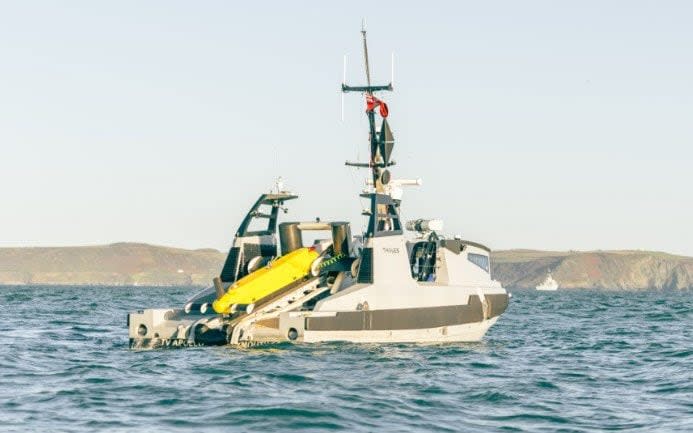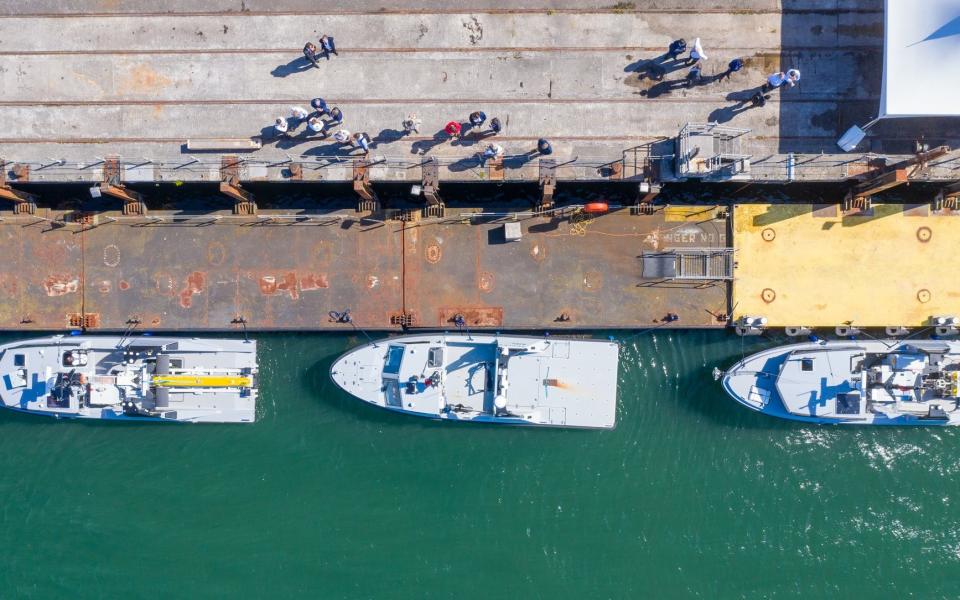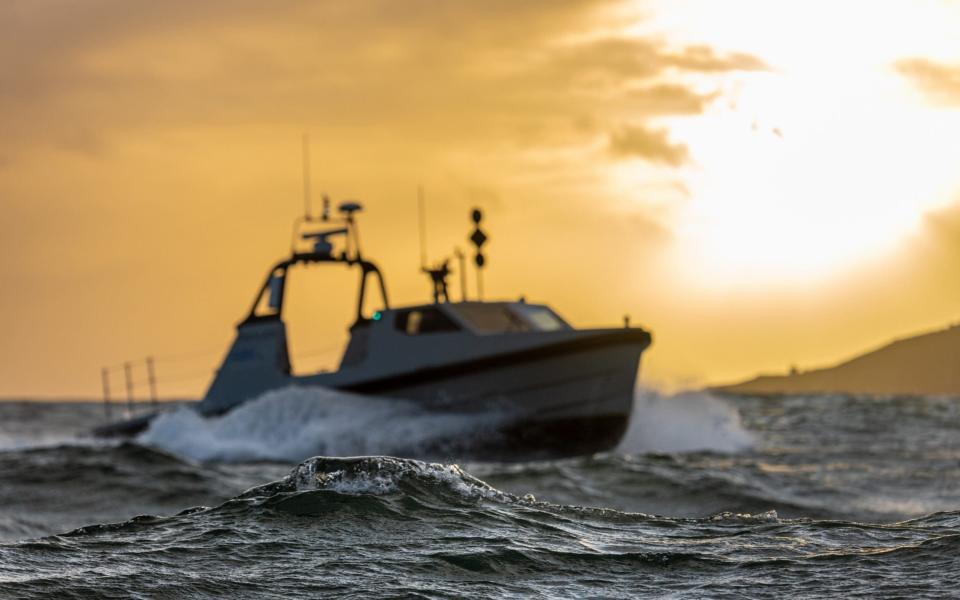Robot mine hunters to replace British sailors as part of £184m programme with French Navy

Robot mine hunters are set to replace sailors, the MoD has announced, as part of a £184million programme with the French Navy.
An Anglo-French programme to detect and neutralise mines will work from an autonomous vessel controlled from a nearby ‘mothership’ or shore-based location.
The unmanned ship will have a towed sonar and a remotely operated underwater bomb to destroy any suspect items.
Speaking at the Franco-British Council Defence Conference, Defence Secretary Ben Wallace said the new system is “designed to replace conventional crewed mine hunting vessels with autonomous systems”.
“Not only does this investment represent a leap forward to our ability to detect and neutralise sea mines [it] creates jobs, generates prosperity, and will enable us to keep those vital sea lanes open – reducing the risk to our ships and the lives of our sailors,” he said.

The new Maritime Mine Counter Measure programme will see Royal Navy mine warfare sailors operating from shore bases or portable operating centres in containers loaded onto the back of other naval vessels such as the Bay-Class ships or commercial platforms.
Trained sailors will still be needed for mission planning and data analysis.
The systems are due to enter service in 2022.
The Royal Navy is regularly called upon to deal with mines and other historic ordnance, left over from the Second World War, around the UK.
A squadron of minehunters is permanently based in Bahrain to keep the Gulf open to shipping and deter Iran from threatening the Strait of Hormuz, a vital global oil supply line.
The new 12-metre-long autonomous surface vessel will operate ahead of a larger naval force. It must keep ‘line of sight’ to the operation centre.
A towed sonar, winched from the back of the craft, will search for suspicious objects underwater using electronic pulses to build an image of the sea bed. Once a mine or other suspect item is discovered the autonomous vessel will send a munition, guided and controlled by cable, to explode next to the object.

The contract will support 215 jobs across the UK at sites belonging to defence-contractor Thales, in Somerset and Plymouth, as well as in the wider supply chain including L3 Harris in Portsmouth, Stonehaven in Aberdeenshire and Alba Ultrasound in Glasgow.
A Thales spokesman told the Telegraph software has been trialled to allow multiple autonomous vessels to operate together as a “swarm”.
The Royal Navy has been working for some years to develop ‘mine countermeasures in a box’.
As well as hunting mines, autonomous underwater vehicles can survey strategic ports and submarine routes.
The MoD plans to merge the capabilities of mine hunting and hydrographic survey.
The current Hunt and Sandown Class minehunters, as well as the Echo Class hydrographic survey ships, will be replaced in the next few years, possibly by the new Multi-Role Research vessels announced last week by the Prime Minister.
These specialist vessels are expected to host autonomous submarine capabilities including the ability to monitor interference with internet cables on the sea bed.
Speaking at Thursday’s conference, French Defence minister Florence Parly highlighted the shared security interests between the UK and France.
She paid tribute to the support from RAF Chinook helicopters to the French counter-terrorism mission in Mali and looked forward to March next year when French forces will join British counterparts in Nato’s Enhanced Forward Presence mission in Estonia, deterring malign Russian activity.
She said her country’s relationship with the UK “resembles a Tango”.
“It is rhythmic, the steps are never fixed in advance, it is up to us to sketch them together and repeat them over and over again, but we are moving in the same direction, with energy and desire.”


